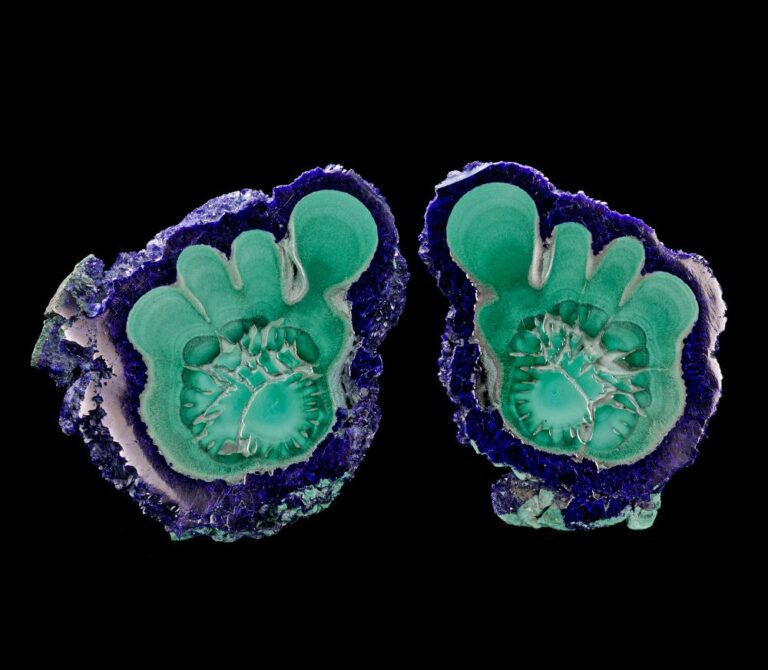After more than two years of research and planning, the Santa Barbara Museum of Natural History proudly opens its new summer exhibit Rare Earth on Saturday, June 11 in Fleischmann Auditorium. Far more than a dazzling display of gems and minerals, Rare Earth tells the story of how we can value the natural world in a new light.
More than 200 specimens in a rainbow of colors and abstract shapes are featured in their beautiful, natural form—highlighting how these amazing works of art naturally occur, where they are found, and how their value (scientific, financial, and aesthetic) is appreciated.
Combining highlights from the Museum’s Earth Science Collection with loans from private collectors and the University of California Santa Barbara, the one-of-a-kind exhibit of sparkling crystals, minerals, and rock formations is sure to fascinate guests of all ages.
Owner and founder of The Arkenstone Fine Minerals Robert Lavinsky, Ph.D., loaned many of the specimens from his personal collection. “This exhibition merges the seemingly separated worlds of art, culture, and science to connect us through stories with the unbelievable crystal treasures found within the Earth. These are the raw materials crushed to build our civilization and make our jewelry for thousands of years, and yet seldom seen in their natural glory as collectible and valuable objects of art, in their own right. Minerals not only make life and civilization possible, but also empower and inspire the arts and culture.”
SBMNH Director of Exhibits Frank Hein adds, “Visitors will experience a unique and truly astonishing collection of minerals that we believe will convey a new way of thinking about the Earth’s resources and how we treat them. This special summer exhibit presents rarely-seen specimens and we’re honored to be able share them.”
Fossils will also be on display including the skull of a juvenile Triceratops horridus that lived over 66 million years ago, and a pair of Colombian Mammoth tusks from local collector Martin Jenkins. After Rare Earth ends on September 5, the tusks will be moved to the Museum’s Earth Science Hall and displayed alongside the Channel Islands Pygmy Mammoth. The hall is also home to a Nanosaurus agilis cast recently donated by Mr. Jenkins.
Mr. Jenkins commented, “It is my great hope that schoolchildren from Santa Barbara County will see possibly their first ever dinosaur at the Museum and have their curiosity piqued into the origins of these extraordinary fossils. It is my greatest honor to be able to donate the first dinosaur specimens to the Museum.”
For more information, visit sbnature.org/RareEarth


Leave a Response